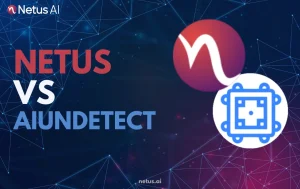
Netus vs. HumanizeAI | Netus.ai
Netus.ai vs. HumanizeAI: Which tool excels in AI bypassing, human-like rewriting or academic reliability? Dive into this detailed breakdown comparing features, accuracy or use cases.
Content Checker: Reduce Plagiarism in Your Email Greetings Effortlessly

Content writer and editor for Netus.AI
Content Checker. The importance of understanding how to write formal emails cannot be overstated, as they remain crucial in professional settings. Using appropriate email greetings is essential, with the salutation varying depending on the audience and their relationship with the sender. Here, we will discuss how to write a formal email, covering the beginning, middle, and end, along with essential aspects such as tone and paraphrasing.
When addressing a group, such as students, use “Dear students.” If you know the recipient’s name, personalize it with “Dear Mr. Jones” or “Dear Professor Carlson.” In cases where the recipient’s name or designation is unknown, use generic greetings like “Dear Managing Director,” “Dear Chief Financial Officer,” or “To whom it may concern.”
Start your email by introducing yourself. A proper introduction should create a good impression on the recipient. Proceed to the email body, which should explain the purpose of the email while maintaining a confident and clear tone. Keep the content brief and informative, as plagiarism is not encouraged in the professional world. Remember that your future may depend on the uniqueness and value of your written work.
When closing the email, create a lasting impression. Remind the recipient of your identity and end the email with your name, contact information, and designation, if appropriate. You can also include your signature if necessary. An example of a formal email signature is:
Sincerely,
Matthew Smith
HR Manager, XYZ Company
Email Address
Phone Number
Do not overlook the subject line while composing a formal email. A well-crafted subject line captures the recipient’s attention and conveys the email’s purpose in six to ten words.
To prevent plagiarism and maintain integrity, using a citation generator can be beneficial for students and teachers alike. Proper citation gives due credit to the referenced authors, and it is crucial to follow the citation style prescribed by the academic institute.
Adhering to a single citation style for the entire document is essential. Otherwise, citing sources in the wrong style can be considered plagiarism. Always double-check the works cited page for errors and missing citations before submitting your written work.
In conclusion, understanding how to write a formal email is crucial in the professional world. By ensuring appropriate greetings, a brief yet informative email body, a proper closing signature, and accurate citation, you can enhance your written communication skills and create a lasting impression. Remember to keep your tone neutral, knowledgeable, and confident to convey your message effectively.
Grammar checking plays a crucial role in presenting well-written research papers. Errors in punctuation and syntax may significantly alter a sentence’s meaning, leaving an unfavorable impression on readers. Mastery of grammar rules ensures proper articulation of research arguments. Utilizing tools like Grammarly can enhance readability and reliability, while effectively identifying broken links and spelling errors, thus fostering trust in the content.
Utilizing a plagiarism checker is vital in ensuring any academic paper is free from errors and maintains originality. The process is simple:
The plagiarism report offers valuable insights:
Employing a plagiarism detection tool helps catch plagiarism, increases accuracy, and facilitates easy corrections through auto-correct options. The similarity score offered by the AI detector ensures that a paper’s content remains unique. By addressing highlighted passages and including necessary citations, scholars can effectively avoid plagiarism and be confident in the originality of their work.
The widespread availability of information on the internet has led to an increase in plagiarism cases. Access to online databases and vast amounts of research materials make it tempting for some individuals to copy rather than create original content. As a result, plagiarism has become a major concern for students, researchers, and academic institutions alike.
Avoiding plagiarism is vital for several reasons:
To help identify and prevent instances of plagiarism, advanced content-checkers have been developed, capable of detecting not only direct copy-paste work but also modified text. These tools, such as self-plagiarism checkers, are instrumental in ensuring adherence to academic standards and in fostering an environment of genuine scholarship.
In conclusion, avoiding all types of plagiarism, including self-plagiarism and unintentional plagiarism, is crucial for preserving academic integrity, protecting intellectual property rights, and promoting original thinking.
When choosing a content checker, consider factors like pricing and whether they offer a free plagiarism checker alongside premium plagiarism check options. You may prefer tools with a monthly subscription for budget planning. Look for ease of use and positive user experience to ensure a smooth process.
A content checker should:
In summary, selecting a high-quality content checker involves considering its pricing, options, ease of use, and the reliability of the results.
With numerous online options for plagiarism checkers, selecting the ideal one is crucial. One must consider factors such as the terms of service, privacy policy, subscription options, the volume of documents requiring scanning, and the technology employed by the service provider.
Among the available options, Copyleaks stands out as the best content checker. Its AI-powered capabilities offer users detailed and accurate plagiarism scan results.
In comparison with other content checkers such as Scribbr, Turnitin, Quetext, Duplichecker, and others, Copyleaks offers a confident, knowledgeable, neutral, and clear approach to plagiarism detection. Its innovative AI-powered functionality distinguishes it from the rest, making it the top choice for content checking needs.
Here is a list of tools that can help check for plagiarism in email content:
Yes, using a plagiarism checker can:

Netus.ai vs. HumanizeAI: Which tool excels in AI bypassing, human-like rewriting or academic reliability? Dive into this detailed breakdown comparing features, accuracy or use cases.

Netus.ai vs. BypassAI: Which tool excels in AI bypassing, human-like rewriting or academic reliability? Dive into this detailed breakdown comparing features, accuracy or use cases.

Netus.ai vs. AIUndetect: Which tool excels in AI bypassing, human-like rewriting or academic reliability? Dive into this detailed breakdown comparing features, accuracy or use cases.

Netus.ai vs. AIUndetect: Which tool excels in AI bypassing, human-like rewriting or academic reliability? Dive into this detailed breakdown comparing features, accuracy or use cases.

Netus.ai vs. Paraphraser: Which tool excels in AI bypassing, human-like rewriting or academic reliability? Dive into this detailed breakdown comparing features, accuracy or use cases.

Netus.ai vs. Smodin: Which tool excels in AI bypassing, human-like rewriting or academic reliability? Dive into this detailed breakdown comparing features, accuracy or use cases.
@ 2024 Netus AI.